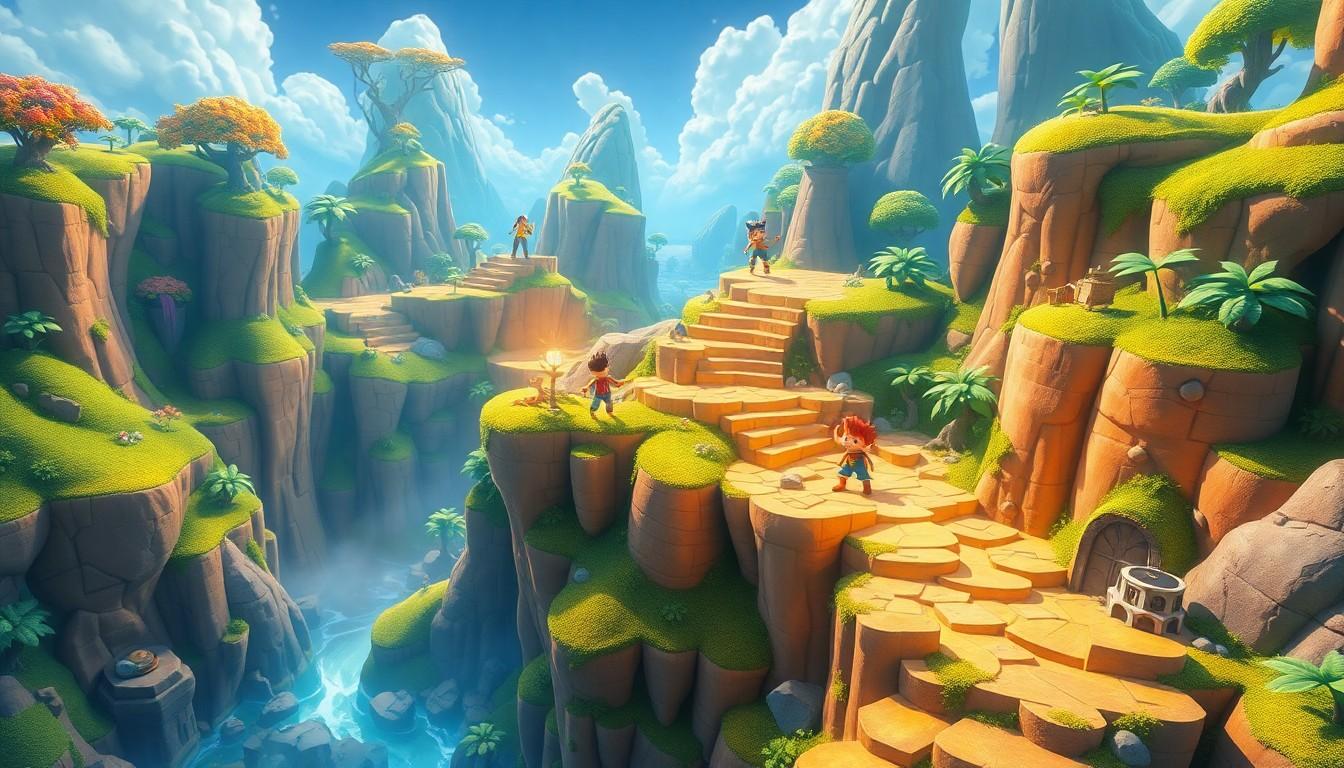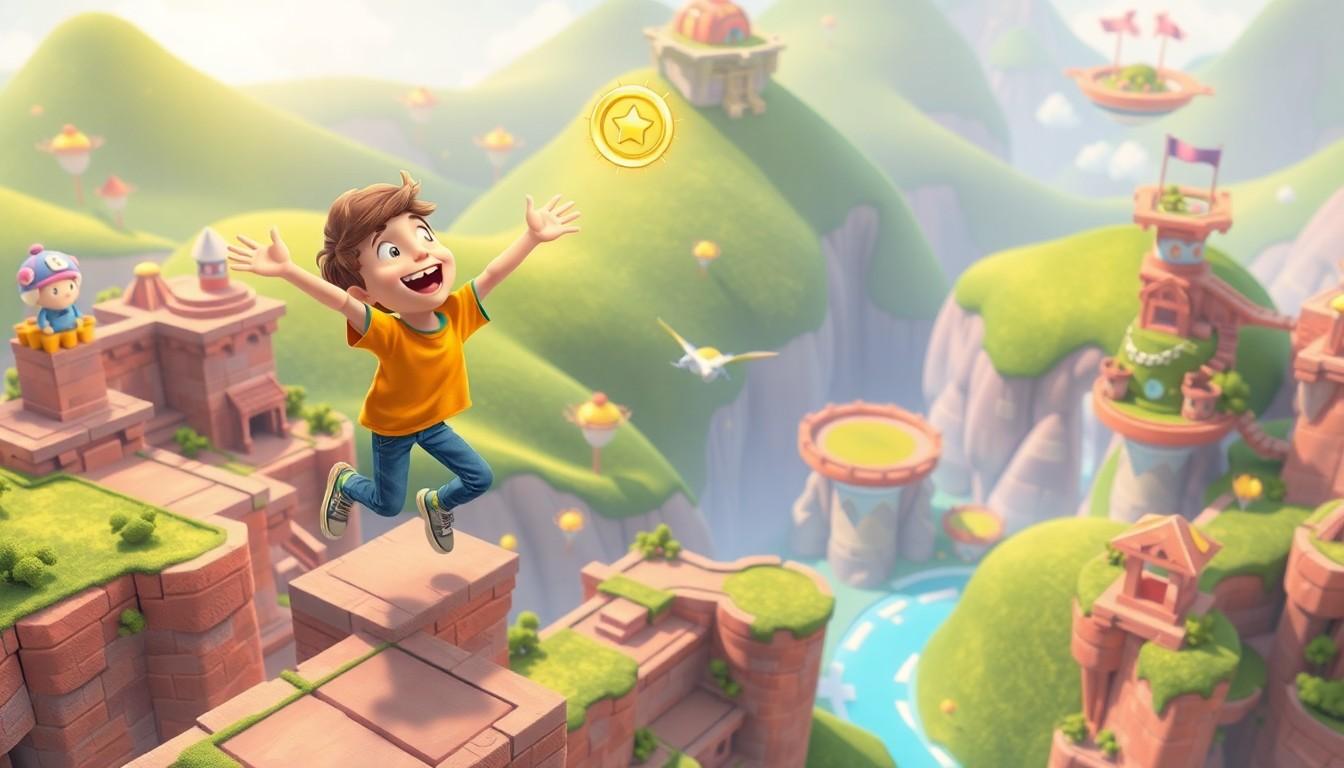In the colorful world of gaming, 3D platformers stand out like a neon sign at a black-and-white party. They whisk players away on whimsical adventures filled with jumping, spinning, and collecting shiny objects that seem to multiply like rabbits. Who wouldn’t want to leap across vibrant landscapes while dodging quirky enemies? It’s a nostalgic trip back to simpler times when the hardest decision was whether to save the princess or just eat another slice of pizza.
3d platformers
3D platformers combine exploration and action, offering diverse gaming experiences. Players navigate vivid worlds filled with obstacles, enemies, and collectibles. Iconic titles include “Super Mario Odyssey,” “Crash Bandicoot,” and “Sonic Adventure,” showcasing the genre’s evolution.
Jumping remains a core mechanic, enabling players to traverse varied terrains. Levels often include complex puzzles that require strategy and timing. Collecting items frequently enhances gameplay, motivating players to explore every corner.
Visuals in 3D platformers create an immersive atmosphere, featuring colorful graphics and detailed environments. Character designs range from whimsical to adventurous, appealing to a broad audience. Soundtracks accompany gameplay, elevating the emotional engagement of players.
Development of 3D platformers traces back to the 1990s, with early titles utilizing 3D graphics to reshape the gaming landscape. Innovation continues as modern releases incorporate advanced technology, improving player interaction and realism. This genre adapts well to new platforms, ensuring its relevance across gaming generations.
Community engagement adds another dimension, with multiplayer features allowing collaboration or competition. Online leaderboards encourage players to refine skills and climb ranks. Events like speedruns highlight players’ expertise, showcasing outstanding accomplishments in the genre.
3D platformers merge action, strategy, and creativity, capturing hearts of gamers worldwide. Engaging mechanics, stunning visuals, and nostalgic elements contribute to their lasting popularity. With continuous advancements, 3D platformers will remain a staple in the gaming industry, inviting players to embark on new adventures.
Key Features Of 3D Platformers

3D platformers stand out through their unique features that enhance the overall gaming experience. Each aspect plays a crucial role in engaging players and defining the genre.
Graphics And Visuals
Graphics and visuals contribute significantly to the appeal of 3D platformers. Vibrant colors and detailed environments create immersive worlds for players to explore. Iconic titles utilize advanced rendering techniques to enhance realism. Dynamic lighting effects often bring characters and landscapes to life. Textures add depth, ensuring everything appears polished and inviting. Players enjoy lush, animated backgrounds that enrich the gameplay experience. Stunning visual artistry helps invoke nostalgia, drawing players deeper into the adventure.
Level Design
Level design serves as a cornerstone of 3D platformers, creating diverse and engaging environments. Intricate layouts challenge players while encouraging exploration. Designers integrate multiple pathways, allowing for differing strategies and play styles. Unique thematic elements enrich each level, making the journey feel fresh and exciting. Players often encounter hidden areas filled with treasures or collectibles. Expansive verticality encourages jumping and climbing, greatly enhancing traversal. Such thoughtful design fosters a sense of discovery, which keeps players engaged and motivated.
Gameplay Mechanics
Gameplay mechanics define the core interactions within 3D platformers. Jumping, spinning, and collecting items are fundamental actions players rely on throughout their adventure. Each game incorporates unique abilities, ensuring varied gameplay experiences. Players utilize environmental elements, like platforms and props, to navigate obstacles creatively. Puzzles often require strategic thinking, adding depth beyond reflex-based challenges. Reward systems encourage exploration by granting bonuses for completing tasks or discovering hidden secrets. Engaging mechanics empower players to master their skills, deepening their connection to the game.
Popular 3D Platformers
Numerous titles stand out in the 3D platformer genre, appealing to gamers of all ages through colorful worlds and engaging gameplay.
Franchise Highlights
Iconic franchises shape the landscape of 3D platformers. “Super Mario” remains a staple, with “Super Mario Odyssey” showcasing inventive level design and memorable characters. “Crash Bandicoot” features a nostalgic charm, offering challenging gameplay and vibrant environments. “Sonic the Hedgehog” boasts speed-centric mechanics, making exploring lush worlds exhilarating. “Rayman” presents a unique art style and cooperative gameplay, introducing a whimsical experience. Each franchise contributes to the genre’s evolution, demonstrating creativity and innovation that resonate with audiences.
Indie Gems
Several indie games shine brightly within the 3D platformer scene. “A Hat in Time” combines charm and humor while offering tight controls and imaginative levels. “Yooka-Laylee,” created by veterans of the genre, embraces nostalgia with a modern twist and captivating visuals. “Astro Bot Rescue Mission” delivers an immersive experience through PlayStation VR, enhancing player interaction. “Celeste” mixes platforming challenges with emotional narratives, creating a memorable journey. These indie gems showcase the variety and passion present in 3D platformers today, proving the genre’s appeal extends beyond mainstream titles.
The Evolution Of 3D Platformers
3D platformers have undergone significant transformation since their inception. Players transitioned from 2D pixelated worlds to immersive 3D environments, enabling richer experiences.
From 2D To 3D
The leap from 2D to 3D marked a pivotal moment in gaming history. Early titles like “Super Mario 64” introduced players to expansive worlds filled with freedom of movement. Audiences embraced 3D graphics, enhancing character interactions and level designs. This shift allowed developers to explore innovative gameplay mechanics such as camera control and complex environments, which fundamentally changed how players navigated challenges. Iconic elements like jumping and collecting evolved, contributing to a more dynamic experience. As technology advanced, 3D platformers became a cornerstone of the gaming landscape, attracting a broader audience.
Modern Trends
Current trends in 3D platformers showcase a blend of nostalgia and innovation. Developers increasingly integrate online multiplayer features, promoting social experiences among players. Modern titles frequently emphasize character customization and progressive narratives, enhancing player investment. Visual fidelity continues to improve, with lifelike graphics and intricate animations. Several recent entries, like “Super Mario Odyssey” and “Astro Bot Rescue Mission,” exemplify this evolution, incorporating extensive level designs that encourage exploration and creativity. Additionally, indie developers are making an impact, introducing unique mechanics and artistic styles, reflecting the genre’s diverse appeal.
The enduring charm of 3D platformers continues to captivate players across generations. With their imaginative worlds and engaging gameplay mechanics, these games offer a unique blend of nostalgia and innovation. As developers push the boundaries of technology and creativity, the genre remains vibrant and relevant.
From iconic franchises to indie gems, 3D platformers provide countless adventures filled with exploration and challenge. Their ability to evoke emotions and foster community engagement ensures that they’ll remain a beloved part of the gaming landscape. Players can look forward to even more thrilling experiences as the genre evolves, inviting everyone to jump into new and exciting worlds.

